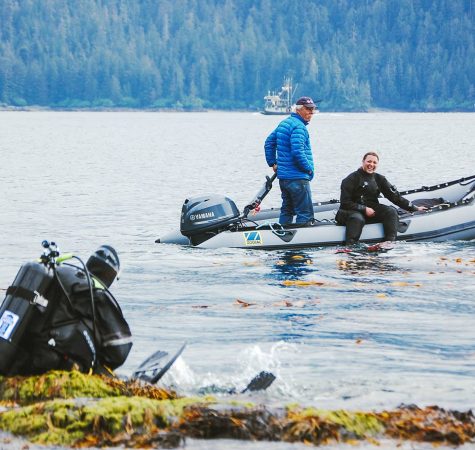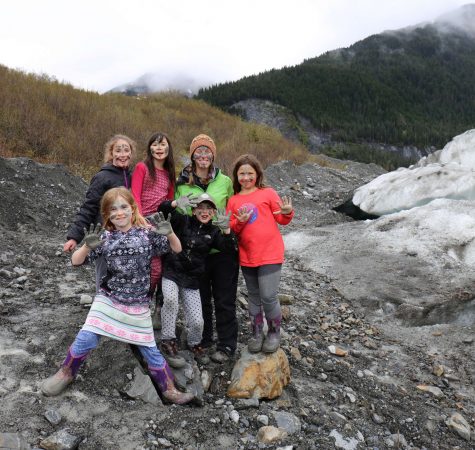From coastal waters to rugged mountains, river valleys to high desert lands, the Pacific Northwest is one of the most diverse geographic regions in our country. Numerous organizations work actively to care for and learn from these lands, whether through preserving watersheds in Idaho, protecting grasslands in Montana, or restoring freshwater ecosystems in Oregon. Alaska in particular boasts some of the world’s richest waters and most diverse landscapes, offering incredible opportunity for scientific research, conservation, and education. We are proud to support several organizations who are caring for Alaskan land and waters and their communities through conservation, research, and education. A few such groups include:

The Sitka Sound Science Center (SSSC) dedicates its research and education to understanding terrestrial and aquatic ecosystems of coastal Alaska. From landslides to salmon hatcheries to lingering oil in Prince William Sound, the research SSSC undertakes is locally relevant and crucial to caring for the Gulf of Alaska. But it isn’t just university researchers and trained lab scientists at work here; SSSC offers educational programs that engage all members of the Sitka community. One program, Scientists in the School, exposes students in rural schools to the sciences through partnerships with professional scientists. Another program called Behind the Scenes invites curious adults to learn about various aspects of terrestrial and aquatic ecosystems at the Science Center. Even Sitka visitors can learn about the region with a visit to the aquarium, touch tanks, or hatchery on the Science Center campus.
The Alaska Songbird Institute looks to the skies for the focus of its research and education. The institute was initially created to conduct two long-term research projects that collected and archived 50 years of data on Alaska’s boreal songbirds, but it has turned into a thriving institute that builds bridges between scientists, schools, and communities. Through youth mentorships, high school internships, field trips, and a week-long field expedition for middle schoolers, local students build scientific literacy while contributing to important research and conservation. Those from all walks of life can also enjoy birdwatching and bird banding tours, as well as events such as the Alaska Bird Conference, all while making the skies a safer place for Alaskan songbirds.

The Prince William Sound Science Center (PWSSC) is another institute dedicated to studying one of the world’s greatest living laboratories, the waters of the Prince William Sound and the Gulf of Alaska. PWSSC describes this region as one of the last, best places to research how an intact ecosystem functions, which means the research conducted in these waters provides key insights into challenges such as climate change, food webs, resource use and sustainability, and more. In addition to dozens of active research projects, PWSSC hosts a discovery room for 2nd-6th grade students, summer day camps such as Girls in Marine Science Day Camp and Nature Art Camp, an outdoor nature group for pre-school age children, and other educational opportunities for youth. They also engage in community outreach such as lectures, a science radio program, and a nature journaling program.
By building environmental literacy and sharing conservation efforts and research with their communities, these three organizations, alongside many others across the Pacific Northwest, are building more resilient communities and ecosystems. When people are involved in research and conservation efforts, they make greater personal efforts to reduce their own carbon footprint. And when the lands and waters around us flourish, communities have a greater opportunity to flourish too. Thank you to SSSC, Alaska Songbird Institute, PWSSC, and so many others for creating healthier communities through your work studying the skies, the seas, and the land in between.







